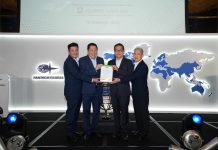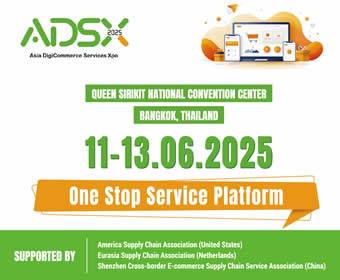By Lam Fong Kiew & Edwin Leow, Head of Tax and Tax Director respectively of Nexia TS, Singapore’s leading home-grown full service audit and professional accounting services firm.
Targeted, inclusive and transforming in nature – this in essence sums up Budget 2016 which was delivered by Finance Minister Heng Swee Keat on 24 March 2016. Given the nature of Singapore’s open economy which is heavily dependent on trade and the continued economic slowdown facing its major trading partners, the Minister’s maiden budget speech has been particularly thoughtful and considered in its measures. With economic growth forecast to remain around 1-3% this year, it is not surprising that the spotlight is on the economy as well as the business landscape in this year’s Budget delivery.
Most notably, this year’s budget marks a significant shift from the broad incentive-based regimes to a more targeted enterprise-centric approach. Overall, the budget signals a clear change in the approach towards value creation and transforming enterprises.
Indeed, businesses – including small and medium-sized enterprises (SMEs) in particular – stand to benefit from a slew of well-timed and thoughtfully crafted initiatives which are aimed at moving them up the value chain under a more radically transformational approach.
At the heart of this year’s budget is the S$4.5 billion Industry Transformation Programme (ITP) aimed at helping firms and industries in their quest to create new value and drive growth. Covering more than 20 sectors which collectively account for approximately 80% of the economy, the scheme aims to scale up industries and position them for internationalisation. Part of this is the Automation Support Package which, estimated at over S$400 million for an initial period of three years, will help firms scale up their automation projects. A National Trade Platform, essentially a one-stop trade information management system enabling electronic data sharing among businesses and government, will also be developed to help businesses in the logistics and trade finance sectors. In addition, a new Business Grants Portal will be launched in the fourth quarter of 2016 to simplify grant applications, eliminating the need for businesses to go from agency to agency to determine which government schemes apply to them. Finally, a S$450 million National Robotics Programme comprising a multi-agency initiative to promote robotic technologies across industries, will also be implemented.
Overall, this approach recognises that each industry is unique requiring tailored schemes to address its unique challenges. It also recognises the powerful dynamic of clustering within most industries that will help transmit the benefits of these schemes when they are applied and shared among the industry participants as a whole, allowing their synergies to be harnessed.
Separately, the Mergers and Acquisitions (M&A) tax allowance, which was first introduced in Budget 2010 to encourage companies to grow through M&A by granting companies a special tax deduction, will be enhanced by raising the qualifying cap from S$20 million to S$40 million. Given the enhancement of the M&A allowance to 25% of the value of the deal in last year’s budget, SMEs can now enjoy up to S$10 million of M&A tax allowances. The government has also, notably, extended the Double Tax Deduction for Internationalisation to 31 March 2020. Likewise, the safe harbor rules on equity investment disposals, which was due to expire by 31 May 2017, has also been extended to 31 May 2022.
And that’s not all. The government recognizes that businesses continue to face increasing cost pressures and has not been complacent on this front. Enhancements to the corporate tax rebate (up from 30% of tax payable to 50%) and the extension of the Special Employment Credit (SEC) scheme for another three years point to efforts to alleviate the cash flow pressures faced by businesses. The newly-introduced SME Working Capital Loan scheme, for loans up to S$300,000 per SME, is an effort to ensure the continued availability of financing to the SME sector whereby the default risk of such loans will be co-shared between the government and participating financial institutions.
All in all, despite the announcement that the existing Productivity and Innovation Credit (PIC) scheme will be discontinued after YA 2018 and the reduction in the cash payout percentage from the current 60% to 40% from 1 August 2016, the above provide a significant array of measures that SMEs can take advantage of in their quest towards enhancing innovation and productivity.
Another key thrust of this year’s budget is the emphasis of cultivating partnerships between government agencies, research institutions and companies to achieve the intended outcomes in areas such as technology adoption, innovation and intellectual property (IP) commercialisation. Critically, government agencies will need to be able to function in a more collaborative and integrated manner in order to realise the benefits of such partnerships.
Finally, in line with its strategy to drive growth through innovation, the Jurong Innovation District (JID), which is essentially a “next-generation” industrial park which will house learning, research, innovation and production activities together, has been launched.
Some have lamented on the lack of incentives aimed at fostering the building of local brands that will provide the added boost to encourage local enterprises to set themselves apart in local and international markets. There may well be gaps that have yet to be addressed. Indeed, we await to see what the report from the Committee on the Future Economy (CFE), due to be issued by the end of the year, has in store. The journey towards innovation and value creation is far from over and will be paved not just by this year’s budget but also those in the coming years.
“We have no instruction manual for our future…Together, we must be prepared to change. We can’t always know the future, and we won’t always have ready answers. But we must have the imagination to forge new paths, the courage to try new ways, and the tenacity to persevere if we don’t succeed on the first try.” – Finance Minister Heng Swee Keat, Budget Speech 2016.
A quick summary of some of the tax initiatives/proposed changes announced in the budget which will generally be applicable to our SMEs is provided below for ease of reference:
TAX CHANGES FOR BUSINESSES
1. Enhancement of the Corporate Income Tax (CIT) Rebate
The CIT Rebate will be raised from the current 30% to 50% for YAs 2016 and 2017. The cap on the CIT Rebate remains the same at $20,000 per YA.
2. Introducing the Automation Support Package
This is a new scheme to be led by SPRING Singapore comprising four components to encourage firms to automate, drive productivity and scale up:
(a) Support under Spring’s Capability Development Grant (CDG): The CDG will be expanded to support the roll-out or scaling up of automation projects on up to 50% of qualifying costs, with the grant capped at $1 million;
(b) Investment Allowance of 100% on approved capital expenditure (net of grants) capped at S$10 million per qualifying project;
(c) Enhanced financing support: The Government will increase its risk-share with participating financial institutions under SPRING’s Local Enterprise Finance Scheme (LEFS) equipment loan, from 50% to 70%, for qualifying projects undertaken by SMEs. It will also expand the LEFS to cover equipment loan for non-SMEs at 50% risk-share with participating financial institutions;
(d) IE Singapore will work with SPRING where relevant to help businesses to access overseas markets.
The Ministry of Trade and Industry will announce more details at the Committee of Supply.
3. Enhancing the Mergers & Acquisitions (M&A) Scheme
The existing cap on qualifying acquisitions for M&A allowance will be doubled from S$20 million to S$40 million per year. This will take effect for qualifying M&A deals made from 1 April 2016 to 31 March 2020. Inland Revenue Authority of Singapore (IRAS) will release further details by June 2016.
4. Extending The Upfront Certainty of Non-Taxation of Gains on Disposal of Equity Investments
Under Section 13Z of the Income Tax Act (ITA), gains derived by companies from the disposal of ordinary shares during the period from 1 June 2012 to 31 May 2017 (both dates inclusive) will not be taxed if:
(a) the divesting company holds a minimum shareholding of 20% in the company
(b) the divesting company maintains the minimum 20% shareholding for a whose shares are being disposed; and continuous period of at least 24 months prior to the disposal.
This exemption will be extended for a period of 5 years from 1 June 2017 to 31 May 2022. All conditions of the scheme remain the same.
5. Extending the Double Tax Deduction (DTD) for Internationalisation Scheme
Under the DTD for Internationalisation scheme, businesses are allowed automatic DTD on up to S$100,000 of qualifying expenses incurred on or before 31 March 2016 on the following qualifying activities:
(a) Overseas business development/investment study trips/missions; and
(b) Participation in overseas trade fairs/approved local trade fairs.
Approved businesses may also apply to IE Singapore or Singapore Tourism Board (STB) to claim DTD on qualifying expenditure exceeding $100,000 or on qualifying expenditure incurred on other qualifying activities, on a case-by-case basis.
The DTD for internationalisation scheme will be extended for another four years from 1 April 2016 to 31 March 2020. The automatic DTD on expenses of up to S$100,000 will also be extended to qualifying expenditure incurred during the above period. All other conditions of the scheme remain unchanged. IE Singapore will release further details of the change by June 2016.
6. Enhancing the Land Intensification Allowance (LIA) Scheme
To encourage higher industrial land productivity, the LIA scheme is extended to buildings used by a user or multiple users, who are related, for one or multiple qualifying trades or businesses, subject to conditions. This enhancement is not applicable to expenditure incurred before 25 March 2016. EDB will release further details of the change by July 2016.
The changes will take effect for LIA applications if:
(a) The LIA application is made from 25 March 2016; and
(b) The application for planning permission or conservation permission for the construction or renovation is made from 25 March 2016.
The qualifying capital expenditure for which an allowance may be made excludes any expenditure incurred before 25 March 2016.
7. Providing an election for the writing-down period for intellectual property rights (IPRs)
Companies or partnerships can currently claim writing-down allowance (WDA) on the acquisition cost of qualifying IPRs over a period of five years. Qualifying IPRs include patents, trademarks, copyrights, geographical indications, lay-out designs of integrated circuits, trade secret or information that has commercial value, and plant varieties. Recognising that the useful lives of IPRs may vary, companies or partnerships may elect to claim the WDA over a period of 5, 10 or 15 years. The election must be made at the point of submitting the tax return of the YA relating to the basis period in which the qualifying cost is first incurred. The election, once made, is irrevocable.
This change will apply to qualifying IPR acquisitions made within the basis periods for YAs 2017 to 2020. IRAS will release further details of the change by 30 April 2016.
8. Introducing an anti-avoidance mechanism for IPR transfers under Section 19B of the ITA
An anti-avoidance mechanism will be introduced in Section 19B of the Income Tax Act to empower the Comptroller to adjust the value of the IPR to the open market value (OMV) in the following situations:
(a) For the purpose of computing the WDA if the acquisition price of the IPR is higher than its OMV; and
(b) For the purpose of computing the balancing charge if the disposal price of the IPR is lower than its OMV.
This change will apply to acquisitions, sales, transfers or assignments of IPRs that are made from 25 March 2016.
9. Allowing the Productivity and Innovation Credit (PIC) Scheme to lapse and lowering the cash payout rate
The cash payout rate will be lowered from 60% to 40% for qualifying expenditure incurred from 1 August 2016. The PIC scheme which has been extended for YA 2016 to YA 2018 will expire thereafter. It will not be available from YA 2019.
NURTURING A CARING AND RESILIENT SOCIETY
10. Introducing the Business and IPC Partnership Scheme (BIPS)
To incentivise employee volunteerism through businesses, a pilot BIPS will be introduced from 1 July 2016 to 31 December 2018.
Under BIPS, businesses will enjoy an additional 150% tax deduction on wages and incidental expenses when they send their employees to volunteer and provide services to Institutions of Public Character (IPCs), including secondments.
This will be subject to the receiving IPCs’ agreement, with a yearly cap of S$250,000 per business and S$50,000 per IPC on the qualifying costs.
The Ministry of Finance and IRAS will release further details of the change by June 2016.
MANDATORY ELECTRONIC FILING
11. Introducing mandatory electronic-filing (“e-Filing”) for CIT returns (including Estimated Chargeable Income, Form C and Form C-S)
In line with Government’s direction for more effective delivery of public services and to be aligned with the Smart Nation vision to harness technology to enhance productivity, mandatory e-Filing of CIT returns will be implemented in stages as follows:

This reform should not come as a surprise as IRAS has introduced e-filing of Form C-S since YA 2012, followed by e-filing of Form C in YA 2015. Besides the benefit of an extended filing deadline of 15 December (as compared to 30 November for paper filing), businesses will receive an instant acknowledgement once a corporate income tax return has been successfully e-filed.
12. Introducing mandatory e-Filing for PIC cash payout application
To streamline and expedite processing of PIC cash payout applications, mandatory e-Filing of PIC cash payout applications will be introduced. This is also aligned with the Smart Nation vision to harness technology to enhance productivity. This will be effective from 1 August 2016.

























